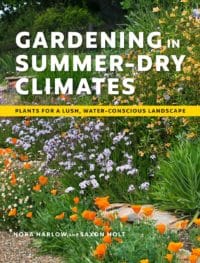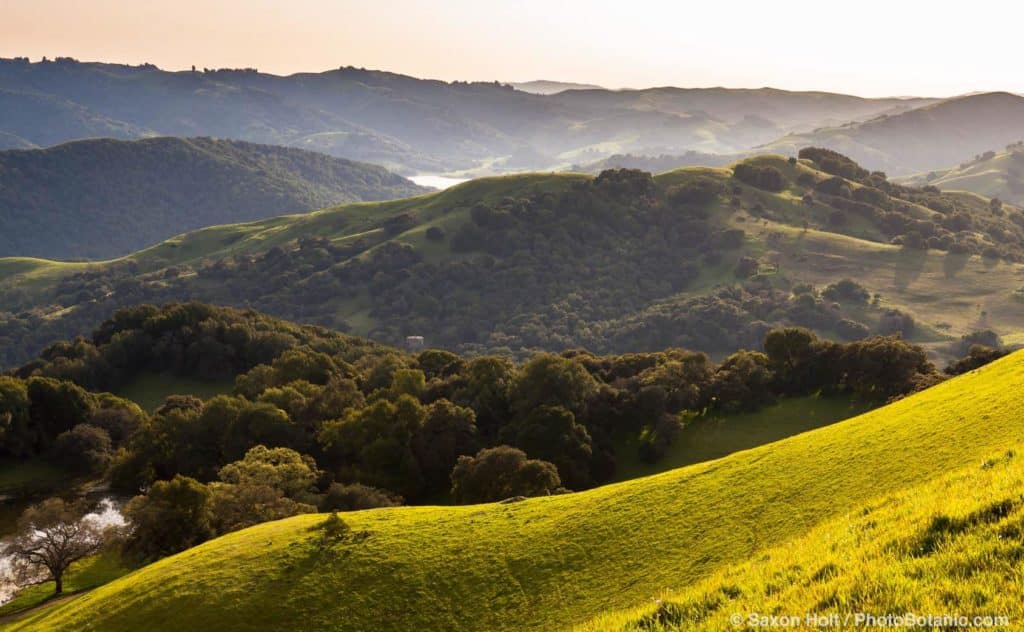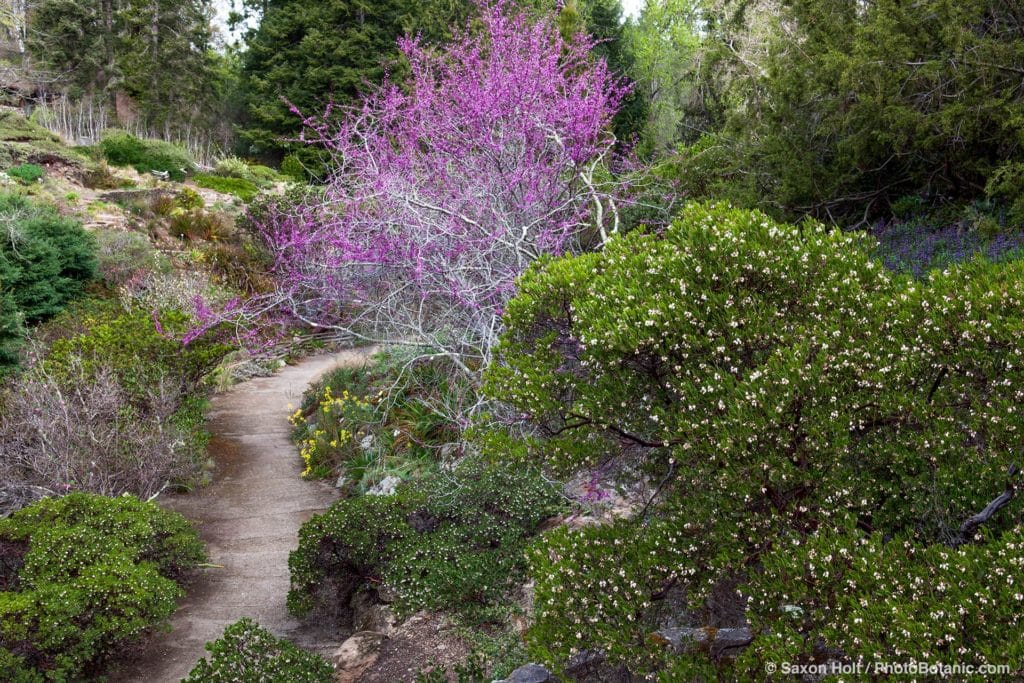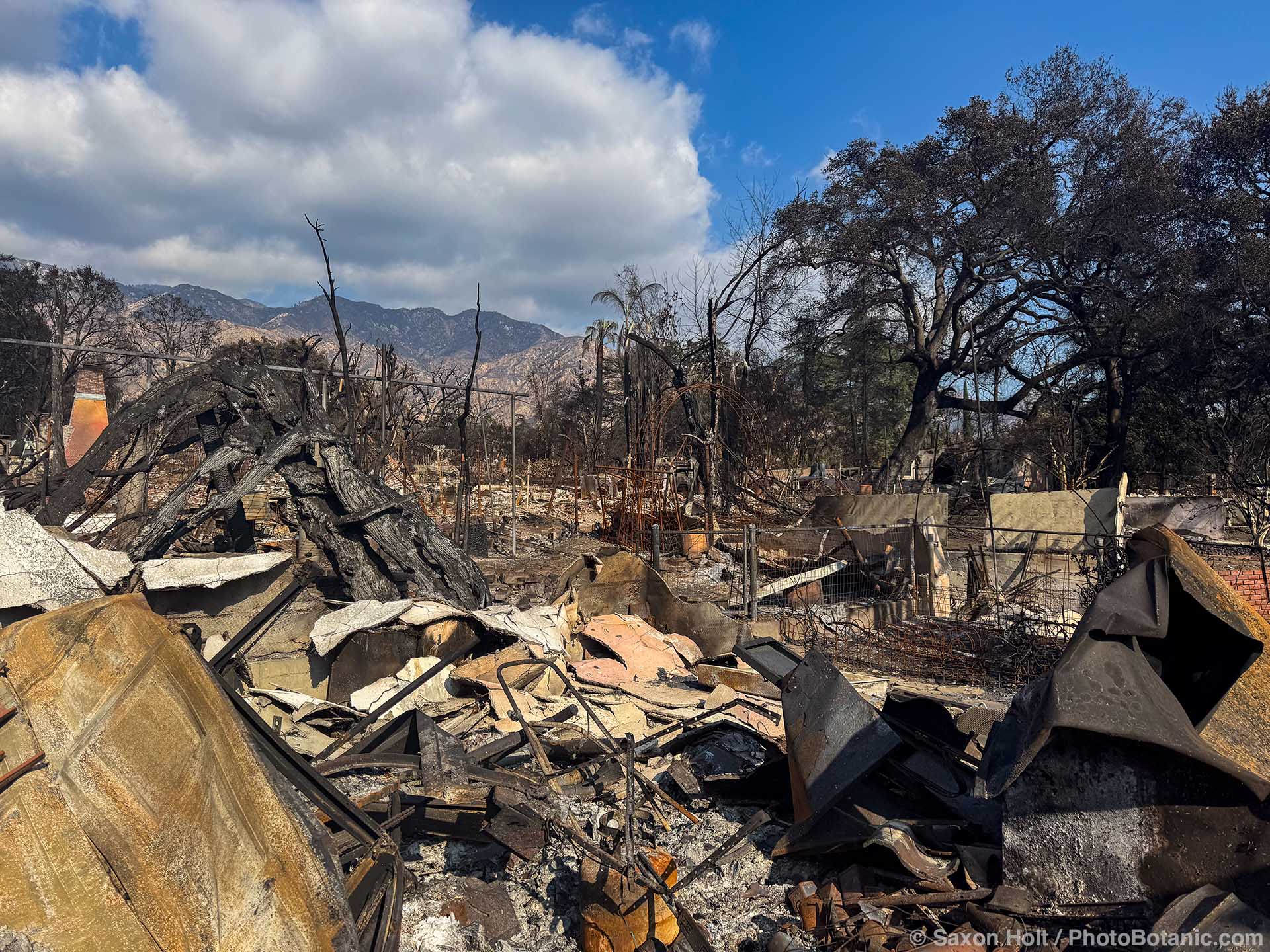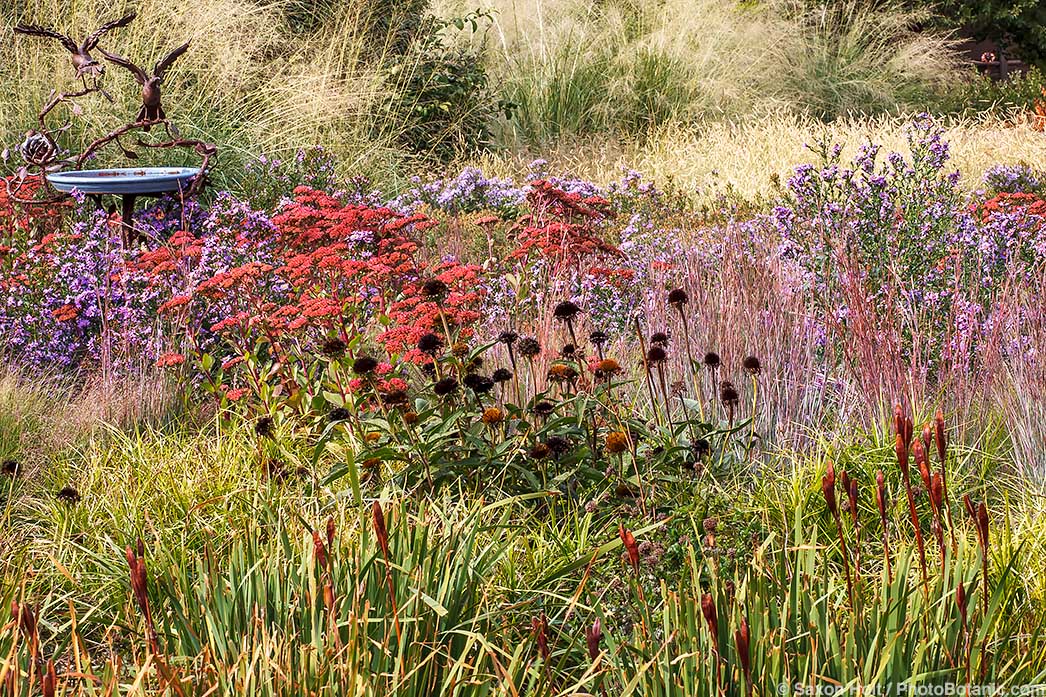Gardening Where You Are
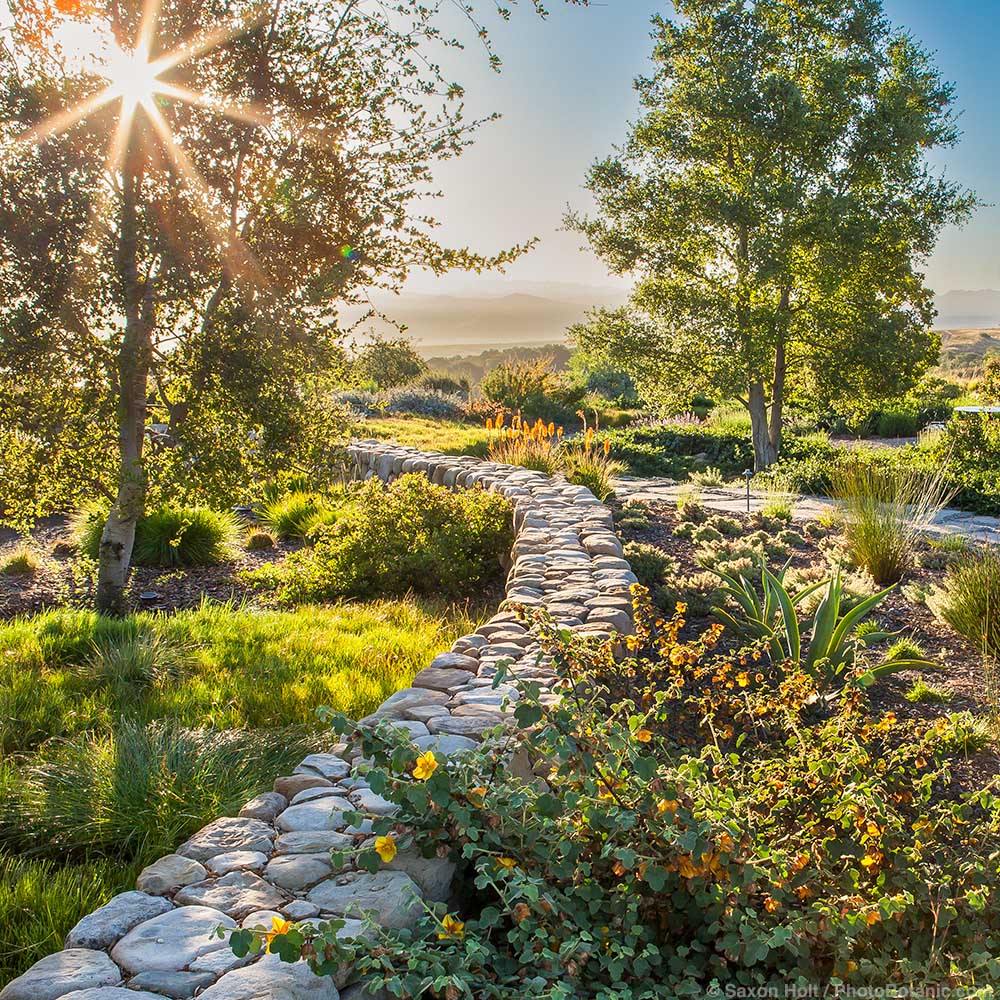
Share This!
As the deadline approached for publication our first book, EBMUD’s Plants and Landscapes for Summer-Dry Climates, I found myself without an introductory chapter, nothing to set the tone or communicate to readers our intentions for the book.
Consumed with a growing sense of panic, I headed off for the southern California desert, where I tend to go when I need to rest and recharge.
Staying with a friend in Twentynine Palms, I spent mornings hiking in Joshua Tree National Monument and afternoons on the guest house deck staring at my laptop. Days passed and no words came.
Every now and then I would set my computer aside and wander through the garden, intent on puttering and ending up marveling at how little was needed from me. Just as in the surrounding desert into which the garden seamlessly blended, every vignette was perfect, every vista complete.
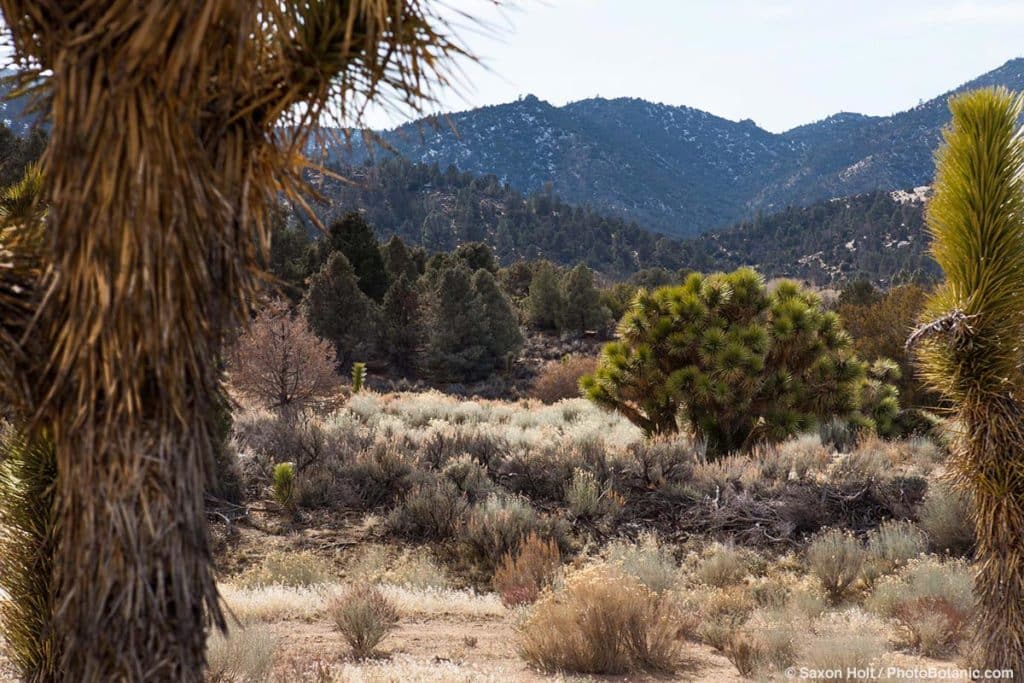
California Southern Desert with Joshua Trees
I ached to take that garden home with me, to reproduce it plant-for-plant and rock-for-rock in northern California, hundreds of miles away. I actually got as far as imagining where I would plant the desert willows, where the chollas and yuccas would go, and how the huge pots of barrel cactus would be artfully displayed.
One unforgettable afternoon, out on my daily patrol, the truth suddenly came unbidden to me. If I wanted that garden I would have to pack up and move.
At my home in northern California, surrounded by bays, buckeyes, maples, and coast live oaks, most desert plants would require herculean efforts to force them to thrive. The shade, clay soils, dripping fogs, and winter downpours would ultimately exact their deadly price. The garden itself would look foolishly out of place against the views of grassy hills and the constantly changing blue-gray surface of a distant reservoir.
I went straight to my computer and typed these words: Gardening Where You Are. The rest of that chapter tumbled out as if writing itself, and in a few short days it was done.
If only my garden would proceed as quickly and with as little effort. But words are not plants, and books are not gardens. Words, for the most part, stay where you put them, and deer ignore them entirely.
Gardening where you are is a constant challenge. We are tempted to buy plants we love, those we’ve seen in garden books or admired on forays to other parts of the world. We try, mostly in vain, to change the fundamental nature of our native soils. We lavish water on plants that can’t take our dry summers, fight off mildew on those that dislike winter fogs, blanket frost-sensitive plants or bring them indoors, and cage those with flowers the deer adore.
How much easier it would be to revel in the singular beauty of our local environment, celebrate the natural world that still, against all odds, remains. That doesn’t mean we must plant only local natives, though that is one lovely way to go. It does mean that we would do well to slow way down, take a good look at our surroundings, note which plants thrive with little or no care from us, touch, feel, and smell the soil, and listen to the heartbeat of our own garden.
For most of us, learning to garden where you are takes time, patience, and a willingness to learn from our mistakes. It also sometimes requires a ruthless approach, a straight-on evaluation of what we really must have, as gardeners and as occupants of this planet, as compared to what our summer-dry climate requires.
We should never feel guilty if we struggle to keep that rose from our grandmother’s garden. We should not feel remorse if we simply must have that Japanese maple that suffers in the wind and drops leaves if we don’t water it more than the law allows.
As Thomas Church said, many years ago, gardens are for people. They are, of course, also for wildlife and for the environment as a whole. There are so many plants from summer-dry climates throughout the world — Chile, Argentina, Greece, South Africa, and anywhere else where summers are dry. Some will do well in any summer-dry climate. And some, for various reasons, will not. We would love to hear from readers throughout California and elsewhere. What plants have you tried and which have done well, which not, and why?
Share This!
Related Articles
By: Saxon Holt
By: Nora Harlow
By: Nora Harlow


